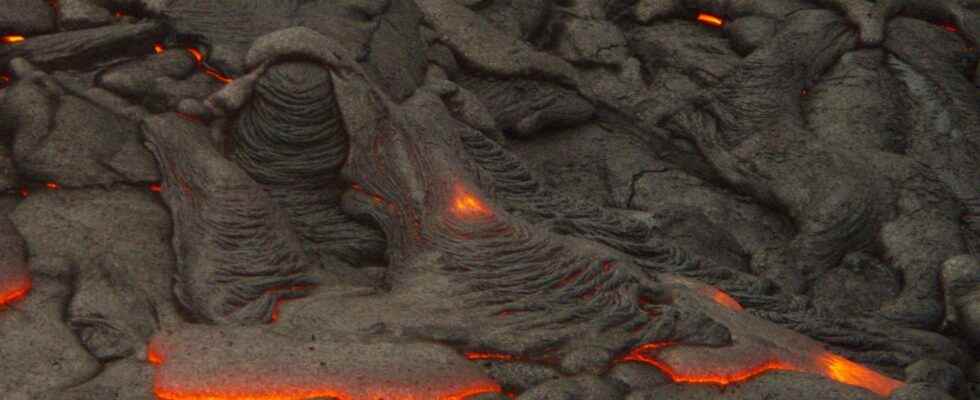A new study questions the deep origin of some hot spots thanks to an analysis of their temperature: they are colder than we thought.
You will also be interested
[EN VIDÉO] Interview: the different types of volcanoes, with Jacques-Marie Bardintzeff Volcanoes play a very important role for the planet and have done so for billions of years. When some are considered sacred, others have extraordinary characteristics … © Futura
The hot spots are known for their intense volcanism having given birth to several islands like Hawaii, thearchipelago of the Galapagos, that of the Canaries or even Iceland. They are associated with large plumes of warm mantle material rising to the surface. Unlike the volcanism of subduction, which is located at the edge of the plate lithospheric, the volcanoes hot spots are often located in the middle of tectonic plates. The large plumes, relatively fixed on the geological time scale, will thus create strings of volcanic islands on the overlying plate, which is highlighted. movement through the process of tectonic plates.
Hot magmas necessary for a deep origin
The origin of mantle plumes hot spots is generally considered to be very deep in the earthly mantle, potentially at the interface between the mantle and the outer nucleus. Such a deep origin requires a high temperature of the material to allow its ascent. Thus, previous research suggested that the temperature of puddles of hot spots was indeed 100 to 300 ° C higher than the magmas rising at the level of the oceanic ridges. The latter have indeed a shallow origin. They are related to the rise of the asthenosphere to the level of the plaque limit that represents the backbone. The decompression of the mantle rocks under the ridge then generates the process of partial fusion and the generation of magma. It is this process that gives birth to the new oceanic crust, continuously.
The heat higher hot spots would come from their deep origin, at the interface with the outer core, a large producer of heat by radioactive decay. However, a new study, published in the journal Science, contradicts this generally accepted image. Indeed, according to the results of the study, many hot spots are much colder than previously thought. However, which calls into question the temperature of the magmas, also questions their origin.
Hot spots that are too cold
In the article, the authors thus analyzed seismic wave speeds crossing the mantle plumes at the origin of the hot spots. It should be remembered that the speeds from seismic waves are strongly dependent on the density of the medium crossed, this parameter being in particular influenced by the temperature. Thus, the temperature of a medium can be deduced by analyzing the velocities of seismic waves. The colder the medium, the more dense it is and the faster the waves propagate compared to a warm, less dense medium.
Even more surprisingly, around 15% of hot spots are said to be particularly cold.
The results of the study show that nearly 45% of hot spots have a temperature of more than 155 ° C higher than that of the backbones, which corroborates well with the model in force. But, on the other hand, almost 40% of hot spots would be only 50 to 136 ° C warmer compared to ocean ridges. Temperatures that appear too low to allow mantle material to rise from the base of the mantle. Even more surprisingly, around 15% of hot spots are said to be particularly cold, their temperature being only 36 ° C higher than the magmas of the ridge.
A geodynamic model to review
So there seem to be different types of hot spots, classified according to their temperature. To better understand their origins, the researchers conducted an isotopic analysis ofhelium on the lava from different hot spots. These analyzes show that hottest hot spots like Hawaii, Iceland or the Galapagos have a deeper origin than the colder hot spots. If the first correspond well to the model of a plume initiating deep in the mantle, the second would have a much shallower origin which could be located in the upper mantle.
This study shows that the hotspot family is more diverse than previously thought. The results notably reinforce an idea already raised previously by several scientists, who suggest that the term “hot spot” only corresponds to a minority of examples and that the term “ofanomaly fusion ‘would be more suitable for colder cases.
It is now up to geodynamicists to find a thermal and convective model of the Earth’s mantle that can account for these new results.
Interested in what you just read?
.
fs11
